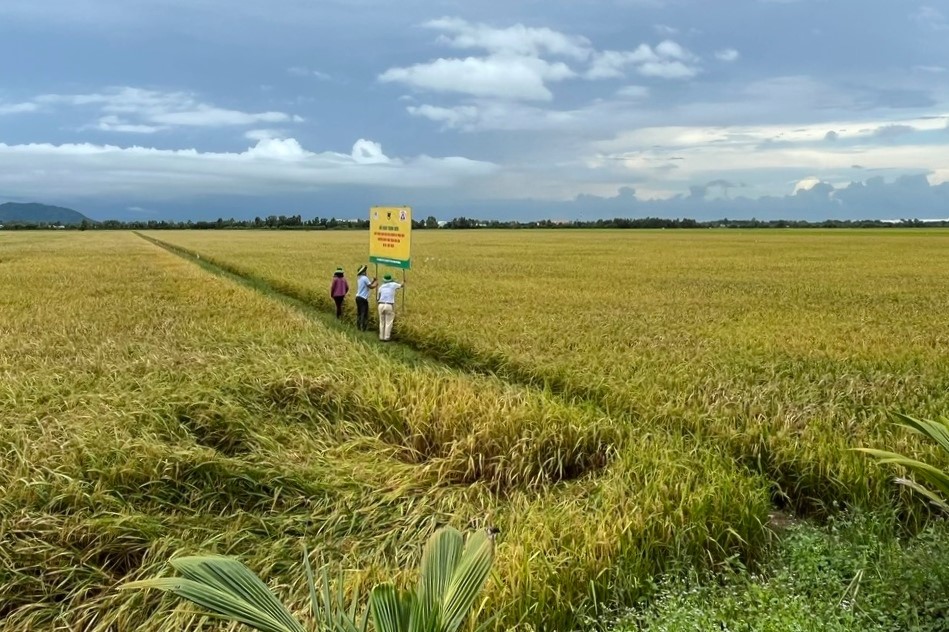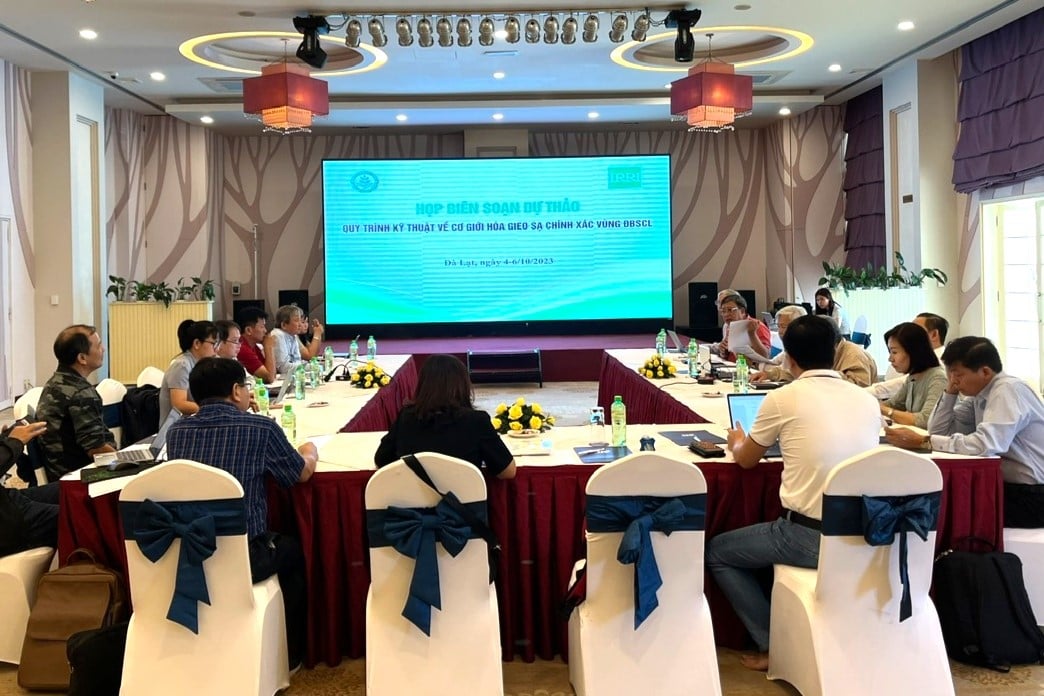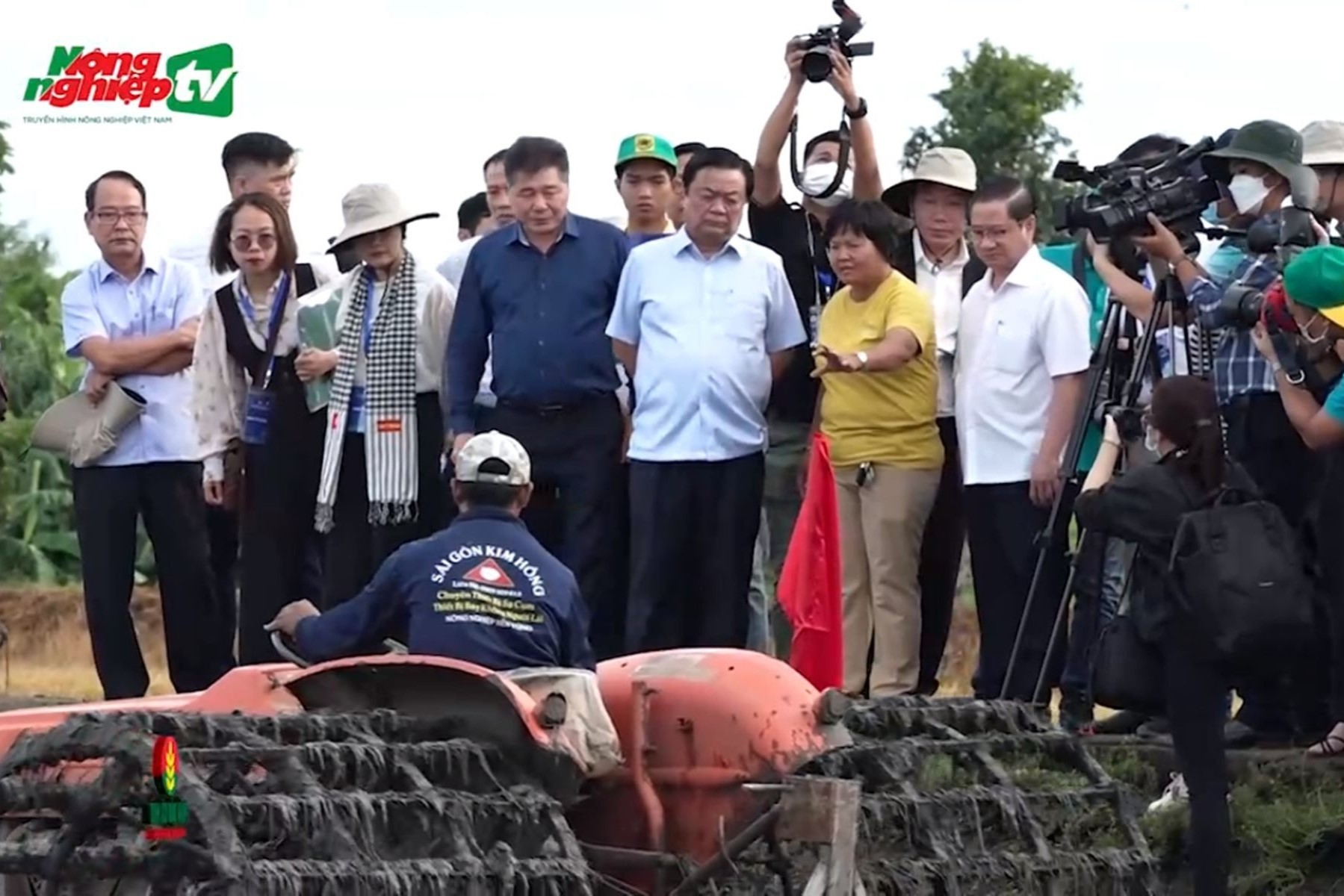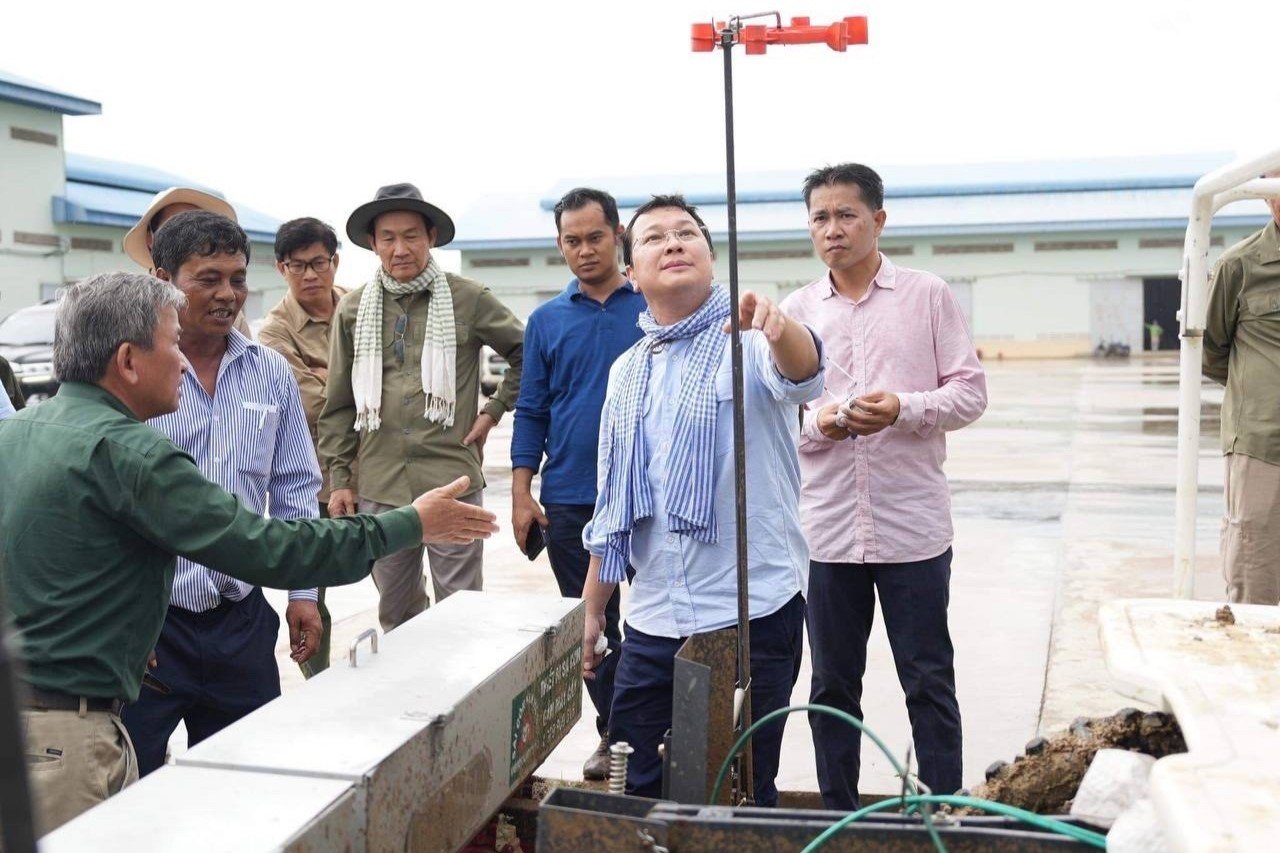November 27, 2025 | 20:52 GMT +7
November 27, 2025 | 20:52 GMT +7
Hotline: 0913.378.918
November 27, 2025 | 20:52 GMT +7
Hotline: 0913.378.918

Effective in the field, combining cluster sowing with fertilizer burying.
Cluster sowing, also known as position sowing or seed transplanting, is a seeding solution that is receiving attention from farmers across the country, especially in the Mekong Delta region, due to its superior efficiency.
Cluster sown fields only use the minimum amount of seed (40–60 kg/ha), thereby helping to reduce the amount of fertilizers and pesticides used, emissions, environmental pollution, and falls, and at the same time, increase productivity, quality, and economic efficiency of rice production.
Moreover, if cluster sowing is combined with the solution of burying fertilizer at the same time as sowing, the advantages of cluster sowing will be more thoroughly exploited while adding the following advantages:

The meeting commented on the draft technical process for mechanizing precise sowing and reducing greenhouse gas emissions in rice production in the Mekong Delta.
With the above advantages, the solution of burying fertilizer can help reduce the amount of fertilizer by 20–30% compared to the process of fertilizer spreading on the field that has been done for a long time.
Saigon Kim Hong has coordinated with fertilizer businesses and localities to deploy the cluster sowing-fertilizer burying model in some localities in the Mekong Delta from the 2021–2022 winter–spring crop to the 2023 summer–autumn crop. The model’s actual results have affirmed the superior advantages of cluster sowing-fertilizer burying solution. Specifically, as follows:
1. Model site at Vinh Thanh Trung - Chau Phu - An Giang in the 2021–2022 winter–spring crop
The model used Dau Trau growth-promoting fertilizer and Dau Trau grain-firming fertilizer from Binh Dien Fertilizer JSC (Dau Trau fertilizer), with the following results:

Leaders of the Ministry of Agriculture and Rural Development and delegates visit the cluster sowing machine at the Agritechnica live event in 2022.
2. Model site in 6 districts: Chau Phu, Chau Thanh, Cho Moi, Phu Tan, Thoai Son, and Tan Chau-An Giang in the 2023 summer-autumn crop.
The buried fertilizer used in the model is NPK fertilizer, produced and distributed by Binh Dien II Fertilizer Production and Trading JSC (2 Phong fertilizer). The fertilizer includes two preparations: (1) "green rice" preparation used as fertilizer to promote tillering with a recommended amount of 240–260 kg/ha; and (2) "firm grain" preparation used as fertilizer to stimulate young rice with a recommended amount of 80–120 kg/ha.
The model gives truly remarkable results, as follows:

The Cambodian Minister of Agriculture, Forestry, and Fisheries, Dith Tina, referred to the cluster sowing machine.
3. Model site at Tri Ton - An Giang in the 2023 summer-autumn crop
The model used Dau Trau growth-promoting fertilizer and Dau Trau grain-firming fertilizer from Binh Dien Fertilizer JSC (Dau Trau fertilizer), with the following results:
The above actual results show that the cluster sowing model, especially cluster sowing combined with fertilizer burying, brought truly remarkable results.
Thereby, it can also be affirmed that cluster sowing has much more advantages than manual sowing. At the same time, if cluster sowing is combined with fertilizer burying at the same time as sowing, the above-mentioned advantages will be thoroughly exploited and bring superior results to other forms of seeding. Therefore, it can be said that cluster sowing combined with fertilizer burying is the "perfect couple" in rice cultivation.
Dr. Bui Ba Bong, former Deputy Minister of Agriculture and Rural Development:
"As for rice cultivation, the current limitation is the low rate of mechanization application in the sowing stage. Looking back a few years ago, at that time the transplanter was considered very good, but when implementing it, the cost was still high, and the stages of making seedlings and growing media encountered difficulty. Up to now, the solution of cluster sowing by machines is feasible, and if it can cover the fields in the next five years, it will be a huge development step."
Translated by Huyen Vu Thu

(VAN) According to Mr. Vo Minh Thanh, Director of the Tay Ninh Department of Agriculture and Environment, Resolution 57 has created a new development pathway for the locality, shifting from traditional toward modern agriculture.
/2025/11/26/4909-2-154329_878.jpg)
(VAN) Pearl grouper farming in HDPE cages not only delivers economic efficiency but also contributes to protecting the environment, creating jobs, and promoting marine-based experiential tourism.

(VAN) The model of making a living under the forest canopy through the agroforestry system in Van Son commune, Bac Ninh province, is expected to generate an annual income of approximately VND 30 million/ha.

(VAN) Many enterprises in Can Tho are harnessing natural energy and reducing greenhouse gas emissions in their production processes, thereby contributing to the promotion of a sustainable green transition.
/2025/11/24/3536-2-112800_176.jpg)
(VAN) Dong Nai now has tens of thousands of hectares of forests certified for sustainable management, and this area will continue to be expanded in the coming period.

(VAN) Vinh Ha hamlet (Dai Xuyen commune, Hanoi) is shifting away from small-scale farming as households adopt bioscurity into their breeder chicken models.

(VAN) Heavy rains make aquatic species more vulnerable to disease. Proactive water management and high-tech systems help farmers prevent outbreaks and protect yields.